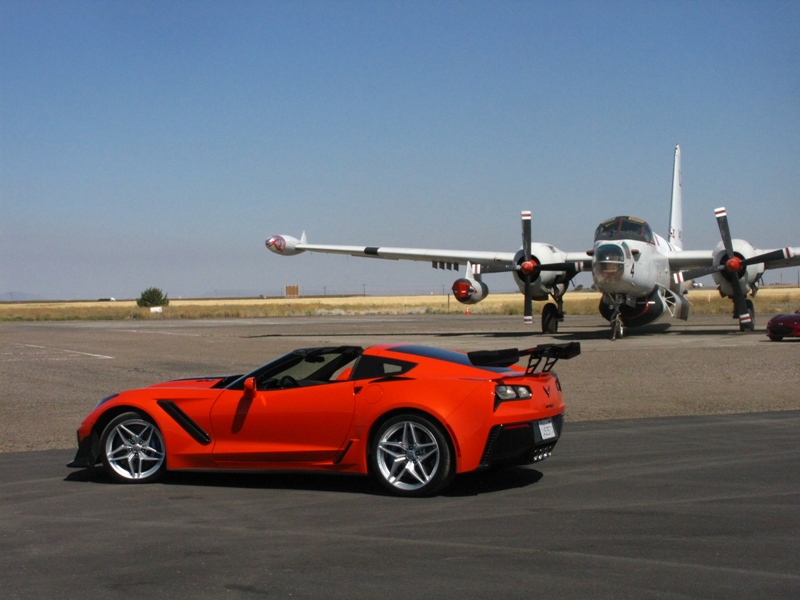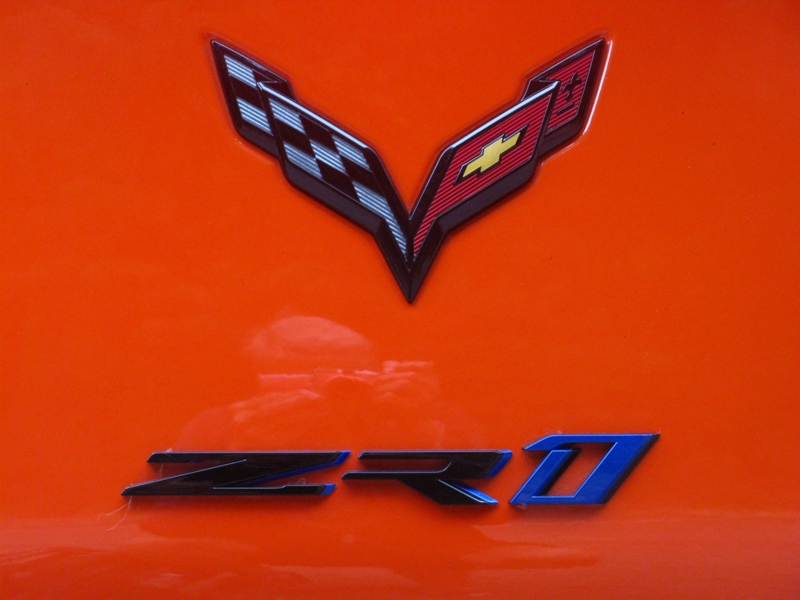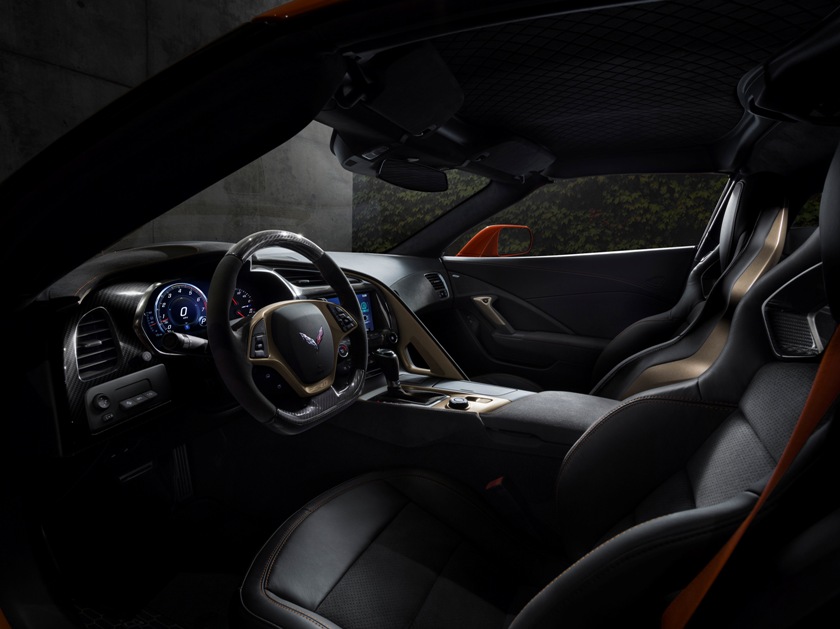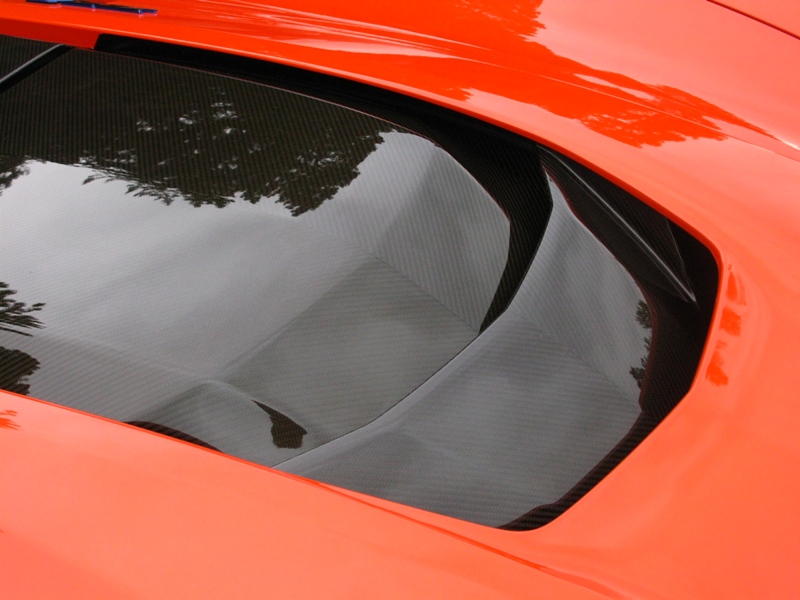It’s certainly an interesting time to be a fan of the Chevrolet Corvette. It’s a time when a new generation has been revealed, and of course, the mid-engined C8 is a big departure from the classic front-engine design that has been the basis for all previous generations.

But at the same time, today’s advances in performance technology and power have not been ignored by Chevrolet, and the current C7 Corvette has been upgraded several times over its lifespan, with the latest ZR1 model being the absolute zenith of Corvette performance.

That ZR1 name has a history in Corvettes, going back to 1970 when one could buy a racing-spec small-block car with stronger transmission, brakes and suspension, but no comfort and convenience items. Very few were sold, and it is now one of the more collectible Vettes.

That ZR-1 moniker (now with hyphen) really hit the consciousness of Corvette fans with the 1990-1995 model that featured the double-overhead cam engine that produced way more power than the pushrod 350 of the day, but also cost way more to buy and service. Interestingly, there hasn’t been anything but pushrod V8s under a Corvette’s hood since then.

The C6 Corvette got a ZR1 (back to no hyphen) model in 2009, and the supercharged 6.2L V8 pumped out a crazy-for-then 638 horsepower. Its equipment and performance were top-notch back then, and still are now, except for the performance limitations of the C6 platform. It lasted until 2013.
But of course, the C7 came along in 2014, and soon the Z06 model was introduced with 650 hp and some technical issues related to cooling in hard use. The horsepower war has been in full swing the past several years, with 700 now seeming to be the minimum ante to play in the upper reaches of American performance cars. GM had to up its game so that the Corvette (and Camaro) performance technology could keep up with the Dodge and Ford competition.

Enter the LT5 engine, an upgrade on the LT4 supercharged 6.2L V8 found in the Z06 and a few other GM cars. With, obviously, an eye on eliminating any cooling issues, and of course generating more power, the LT5 gets upgraded fuel injection, crankshaft and oiling system, along with a supercharger that is 52 percent larger than the LT4’s, plus no fewer than 13 different heat exchangers or radiators. With the same 6.2-litre displacement, the LT5 generates a mere 755 horsepower and 715 lb-ft of torque at 3,600 rpm.
Behind the monster engine is your choice of a 7-speed manual or 8-speed automatic transmission. The one we drove was the automatic (for $1,990 extra), and we have to say that the car accelerates so fiercely, keeping up with shifting it is probably way easier, and quicker too, with the automatic left to its own devices, or via the paddles on the steering wheel. Just sayin’.

The base (1ZR version) ZR1 includes a number of high-end performance features, standard, for its $138,595 price. There are Brembo carbon ceramic brakes, Magnetic Ride Control, dry sump oil system, limited-slip differential with oil cooler, Michelin Pilot Super Sport tires, and carbon fibre ground effects package.
The up-level 3ZR package (for nearly $12,000 more) is mostly a comfort and convenience package, with better Bose audio, microfibre and leather trim, navigation, power seats, and a performance data video recorder. Either level is a pretty nice package, but there are still lots of options to choose from, and the ZR1 we drove had more performance goodies on it.

For example – the ZTK Track Performance Package. Let’s face it, if you have a ZR1, you are going to want to get it out on a closed track if you can. So this package gives you even stickier Michelin Pilot Super Sport Cup 2 tires, performance suspension, removable (by hand or by curb) end plates for the front splitter, and an adjustable carbon fibre high wing, just so everyone knows what you’ve got. Actually, it greatly increases downforce at high speeds. The price for this package is a reasonable $3,445.
You’ll need bolstered seats if you are going to track the ZR1, and Chevrolet will sell you Competition Sport Seats for $2,295. Like most such seats, they are harder to get in and out of, but oh so supportive once you park your butt in them.

Anything beyond the basic colours (black, white, red, silver) costs extra, and the ZR1 we drove had the “signature” Sebring Orange Tintcoat which, with all the black trim and intakes, is quite stunning. The three tintcoat colours (orange, red, and the famous Corvette racing yellow) will set you back $1,495.
So, you get the picture – Chevrolet has spared no effort or expense to make the ZR1 the ultimate Corvette at the moment, And of course, there are the fans of the current horsepower wars, and the long-time Corvette lovers, and those who like to have a rare ‘end of the line’ model with all options – lots of people with a few extra dollars who can pull the trigger on a car like this. But unless it is going to a collector who will put it away as an investment, it is like any other car – it needs to be driven. So how does the ZR1 stack up out on the road?

Having not had the chance to drive it on any kind of track, our only exposure to the ZR1 was out on the open road far from the city, and in this environment, it is plenty of fun. Of course, everything you do with your right foot has to be considered through the lens of safety and legality, so any sustained speeds anywhere near its 212-mph top end are likely to be few and far between. But we managed a couple of inadvertent bursts a few km/h over the limit, and took very little time getting there, with zero-to-100 km/h achieved in the 3-second zone. To extrapolate on that, it’ll turn 10.6-second quarter miles at 134 mph all day long, according to GM.
Cornering was flat, the ride was varying degrees of harsh depending on suspension settings, braking was stop on a dime and give you change. None of this should be a surprise to anyone, but like any supercar, you are not often going to approach its limits without access to a long track, or a dry lake bed. Such is the ownership experience of a ZR1. Like any car with this one’s capabilities, the owner must be content in knowing that the car can achieve them, while most times, not being able to actually experience them.
Much the same can be said about the 650-hp Corvette Z06, which is capable of maybe 90 percent of what the ZR1 is, but for about $40,000 less. Most will never or seldom get near what a Z06 can do either, so one must conclude that the ZR1 is really positioned as the ultimate Corvette, a halo car for the faithful, at this time of great change for the model. It has the most of everything – price, horsepower, torque, acceleration, top speed, handling, downforce – you name it, and the ZR1 is the top-dog Corvette – ever. It must also be said that it is a great value in the exotic car arena. And exotic it must be called.

It’s still for sale in Canada, if you go by the official Chevrolet Canada website. Your local dealer may not have one in stock, but presumably, there are some left which will be available into the winter and the launch period for the C8. Is the ZR1 the high-water mark for Corvette performance, or will the C8 out-do it? It might take a few years to find that out, but for those who prefer their Corvette engines up front like they always have been, the ZR1 is the ultimate Vette, and the last in a long line of ultra-performance cars that go back several decades. It was a great run.




